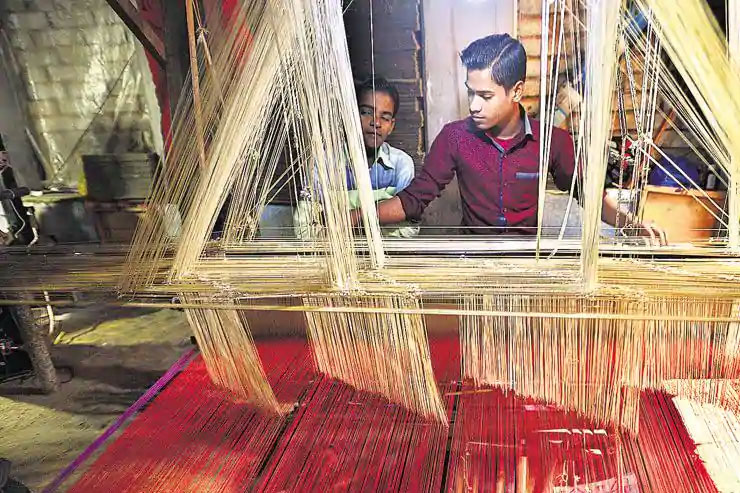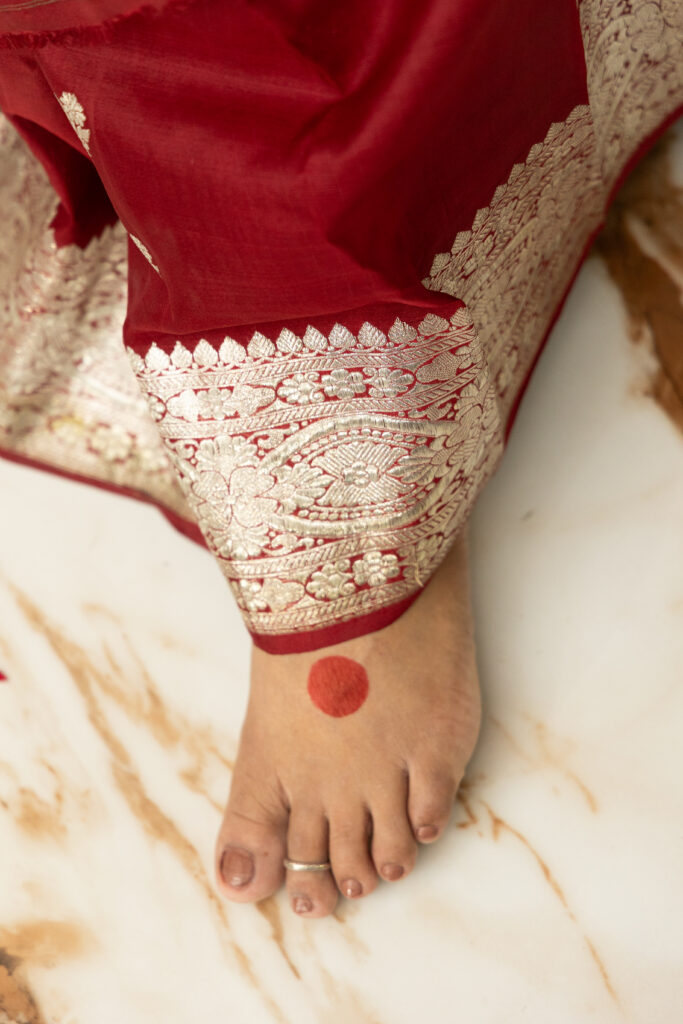
Banarsi Saree in making
Banarasi handloom sarees are a collection of exquisite traditional Indian garments. These sarees are handwoven in the city of Varanasi using fine silk threads. They feature intricate designs and motifs that are woven using gold or silver zari threads, making them a luxurious and timeless piece of clothing.
The History of Banarsi Weaving

Historical Roots: The Origins of Banarasi Silk
Banarasi weaving has a legacy spanning over 2,000 years. This ancient craft, believed to have been introduced by Persian artisans, seamlessly blended with Indian traditions to create its unique identity.
Influence of Mughal Dynasty on Banarasi Weaving
The Mughal period marked a transformative phase for Banarasi weaving. The arrival of Persian artisans in the 14th century under Emperor Akbar introduced intricate floral motifs, Persian-inspired designs, and the zari (gold and silver thread) technique. These features remain iconic in Banarasi silk sarees today.
The Role of Hindu and Buddhist Traditions
Even before Mughal influences, Hindu and Buddhist traditions heavily inspired Banarasi designs. Ancient scriptures depict garments resembling Banarasi silk, adorned with lotus motifs and sacred symbols, showcasing its spiritual roots.
The Golden Era of Banarasi Silk

The Golden Era of Banarasi Silk
The craft reached its zenith during India’s medieval period, with Varanasi emerging as a hub for weavers
The Flourishing Weaving Industry in Varanasi
Varanasi’s strategic location along the Ganges made it a thriving center for trade. The city attracted skilled artisans who elevated the craft to new heights, blending regional styles with global influences.
Global Recognition in Ancient Trade
Banarasi silk was a prized commodity in ancient trade routes, especially in regions like Central Asia and the Middle East. Its luxurious appeal made it a favorite among royals and nobility worldwide.
Craftsmanship Behind Banarasi Weaving
Banarasi weaving is a labor-intensive art that demands unparalleled precision and expertise.
The Unique Techniques and Tools
Weaving a single Banarasi saree involves intricate techniques, with artisans often working for weeks. The jacquard loom, introduced during colonial times, enabled complex patterns and revolutionized the weaving process.
Motifs and Patterns: A Symbol of Tradition
From paisleys and florals to Mughal-inspired jhallar (edging), Banarasi silk motifs reflect India’s diverse cultural influences. Zari threads and meenakari (enamel work) elevate the aesthetic, creating timeless masterpieces.
Conclusion
Banarasi weaving stands as a proud testament to India’s rich cultural and artistic heritage. Its journey from ancient traditions to modern adaptations is a story of resilience and innovation. By supporting this craft, we not only celebrate our history but also ensure the livelihoods of countless artisans. The legacy of Banarasi silk is timeless, and its charm continues to captivate hearts across the globe.

The future of Banarasi weaving depends on striking a balance between tradition and innovation. With increased awareness, government support, and global recognition, this craft is poised to flourish.